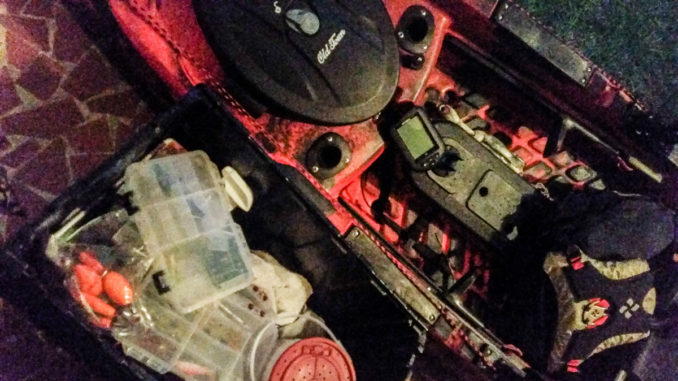
Survey kicks out three must-haves for outings
Let’s face it. Kayakers are on par with just about anyone when it comes to “stuff”. The late George Carlin did a comedy routine about stuff; it was spot on. In order to feel comfortable, we need stuff that can go with us. Instead of an empty shell of plastic, we customize our kayak with stuff.
If you type the word kayak into a search-engine image browser, you will find a few bare bones kayaks, usually from the manufacturers themselves, and a whole lot of kayaks with stuff — lots of stuff, in fact. You will find rod holders, anchor trolleys, anchors, fish finders, global positioning units, measuring devices, fish grips, safety flags, drink holders, camera mounts and cameras; that doesn’t even count what is stuck behind the seat in the infamous kayak crate. Yes, you will find kayaks with stuff.
I have met paddling enthusiasts over the years who fall in one of two categories. The first is the minimalist who does not carry a lot of stuff. The second is the maximalist (if that is a word) who believes in having as much stuff as possible just in case they may need it. It would, after all, be horrible to paddle several miles out and realize the fish are biting what you left back in the truck.
So, I pondered just what stuff we really do need, and what stuff nearly all of us agree on carrying out on the water. The easiest way to find out was to post the question on social media and tag several key figures in our area. Later, I decided to broaden the search for answers to what is the essential stuff.
The posted question: You have your kayak, personal flotation device, paddle and rod; what other three things are a must have?
The answers came back with questions. How long will you be out? Where will you be fishing? May we assume you already have your fishing license you?
I thought those questions would be better left up to the person answering. Therefore, give me three things, and you decide the answer.
Among the top answers was the fishing license. Not once was wallet included, however. For me, my license would be in my wallet, as well as money and identification. My wallet goes into a sealable sandwich bag to prevent getting wet and then is placed in a waterproof catch bag sealed in a hatch screwed into the rear of the kayak.
Tackle was also a popular answer to those that assumed you did not have any with you. Honestly, however, I have been out at times with nothing more than a cork, sinker, hook and some worms or crickets. I guess you could consider the worms and crickets as the extra stuff.
Three answers in some way made at least part of nearly everyone’s comments. There is stuff you use. Then there is stuff everyone needs. This is that stuff.
Emergency signaling device. The answer may have been listed as a light, or it may have been some sort of emergency flare. A whistle was a common answer. All of them fall under the same category of stuff, that stuff being emergency signaling devices. I keep a whistle attached to my PFD as well as a strobe. The strobe was something I used in SCUBA diving attached to my inflatable dive vest or buoyancy compensator. If there is a better and more-welcome answer than this that could pop up on the replies, I do not know what it could be.
Water/Food. While I may not have considered food myself, I can’t really think of a single time I did not have at least a soda or water with me. On the water, it’s easy to become dehydrated in a short amount of time. First, you have the sun, then you have the reflection. You exert a lot of energy paddling as well. That equals the need for rehydration. Food falls in the same lines, especially on a long day on the water.
An excellent point was made about in an emergency situation, the water you are in is not necessarily a solution for dehydration. Unfortunately, with a combination of pollution from both man and natural sources, unfiltered water can cause a world of issues you do not want to contend with if you can help it. If you watch any of the survival reality television programs, you will see how often people get sick drinking water in the wild and end up in much worse shape.
Knife. A knife is more than a survival tool. It is used to cut bait, trim excess line, pry and even dig up small items that fall in hard to access cracks and crevices. And yes, it is a survival tool. It can cut an anchor line quickly in a fast-moving current, slice through heavy braided line when an unwanted catch is dangling beside the kayak, and help build fire and shelter in a stranded situation.
Check your stuff the next time you get ready to paddle out. Look at the obvious such as the rod, paddle and PFD, then look at the ‘I just cannot go without it’ stuff. Then grab that kayak crate and put all that stuff in it so you can have more stuff when you go out.



Be the first to comment